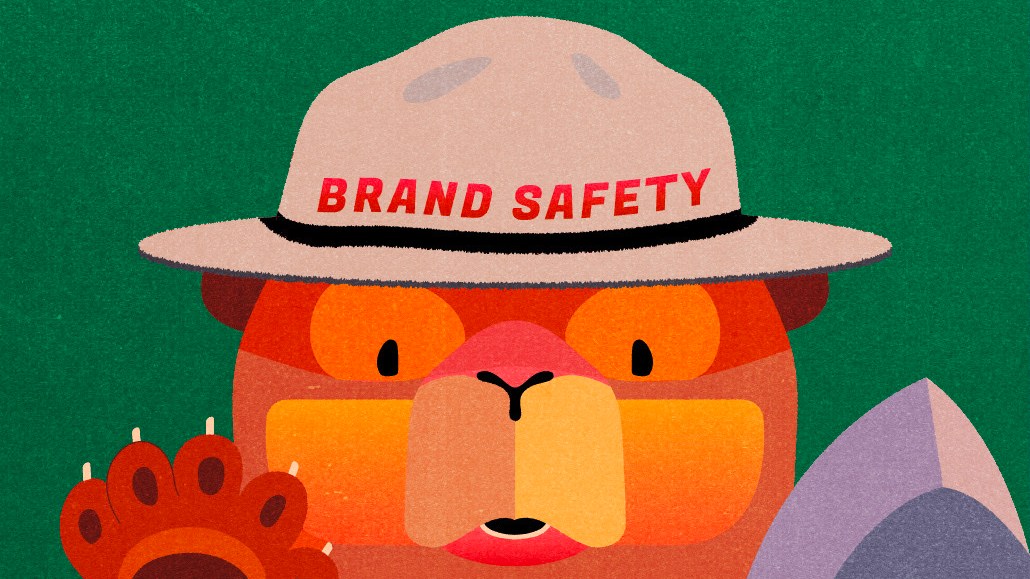Register by Jan 13 to save on passes and connect with marketers from Uber, Bose and more
Media layoffs are back, dragging the never-ending drama of brand safety with them.
This déjà vu has hit hard for many media execs, particularly those connected to Jezebel. The site’s interim editor in chief, Lauren Tousignant, revealed to 404 Media that “brand safety” — essentially, advertisers distancing from Jezebel’s content — was cited by management as a major factor leading to G/O’s decision to halt publication and lay off the staff.
It’s an age-old tale in media. Publishers endure financial strain due to cautious advertisers leading to cutbacks. Typically, the reasons for this frugal ad spending aren’t crystal clear. They get blamed on a “challenging market,” which arguably could mean anything given the uphill battle publishers continually face. Tousignant’s account, however, provides a rare, sharp insight into the harsh reality of running an ads business on the back of news.
“Right now, everyone’s stuck,” said Thomas Lue Lytzen, the director of ad sales and tech at Danish publisher Ekstra Bladet. “As long as people think that brand safety is a matter of turning something on or off, everyone’s losing.”
But not everyone’s feeling the same pinch. If they were, the debate over whether advertisers should step up to support news publishers would’ve been settled ages ago.
Keep reading to get a handle on one of advertising’s enduring issues.
The case for brand safety
The argument is quite straightforward, so let’s keep this part brief.
Building a brand revolves around creating specific associations in people’s minds. So, it makes sense why some brands avoid advertising on content that’s negative or triggers anxiety.
But here’s the thing: when it comes to news content, there’s not much evidence suggesting readers truly care if a brand’s message appears beside a negative news piece. At this point, the worry that it could seriously affect brands is more of an educated guess than a proven fact. Still, marketers have the right to sidestep those negative topics — it’s their money, after all.
“There are going to be a lot of big advertisers that will want to support journalism with their dollars following a big news event but at the same time they’re not sure what to say in an ad,” said Mario Diez, CEO of Peer39. “The creative messaging in these instances is so important and arguably a misunderstood part of the whole brand safety debate.”
Maybe publishers would find this an easier pill to swallow if some marketers weren’t diverting that money away from news and into platforms where their brands could also be at risk. Think about it: they’re associating their brand with platforms that have a laundry list of accusations — misleading metrics, dabbling in politics, privacy breaches, you name it. And the real kicker? These platforms don’t really play by the same rules; they aren’t super open to third-party checks.
As it turns out, the case for brand safety is a complex web woven with contradictory dynamics.
“I think CEOs would be shocked to learn that their companies were avoiding news advertising outright or throttling back on it so much as to not effectively leverage or support the channel,” said Lou Paskalis, chief strategy officer at Ad Fontes Media Inc., a Colorado-based startup that seeks to rate news for reliability and bias. “I suspect that in the coming years news will become an imperative for advertisers — in much the way that Diversity, Equity and Inclusion and Sustainability have become priorities for them in recent years.”
The case against brand safety
Let’s start off on the right foot: this isn’t about throwing shade at brand safety itself, as it is about venting frustrations over the problems that arise because of it. Namely, marketers relying on tech to shield their brands, even though they’re well aware it’s not flawless. Why? Fear, plain and simple. They’ve long been anxious about their brand being seen alongside content considered risky or controversial, and the storm of trouble it might stir up.
When this fear is somewhat contained, publishers can ease up a bit, to some degree. Marketers tend to avoid news events they’re wary of, and once they establish corporate policies, they usually resort to brand safety tech to appear in a more deliberate manner alongside it. Here, the concern isn’t so much about the news being unsafe for their brands, but more about whether it’s suitable.
However, marketers aren’t always the most level-headed bunch. They’re so worried about all the things that could go wrong with brand safety, from bad messaging to upsetting consumers, that it clouds their judgment. If they could shake off this fear a bit, they might not be in such a pickle. It’s like they’re stuck in a constant game of whack-a-mole with negative news, but they’re playing it with a pretty blunt hammer.
Whether they label that hammer “keyword blocking” or “semantic tech,” the end result is still the same — blocking pages, videos or content based on terms and frequency (a.k.a. keywords). And the more this happens, the higher the chance that marketers might accidentally block not just unsafe content but also vital discussions that truly match the brand’s message.
But wait, there’s more. There’s a money side to this too. When advertisers start slamming the door on certain places, it jacks up the price to advertise in what they think are “safe zones.” This messes with the efficiency of their ads and goes against what the advertisers are actually trying to do. Plus, it could cramp their reach, which is just as bad.
That’s the hiccup with this fear — it muddles the real deal that success isn’t just about dodging risk but about smoothly balancing safety and the amazing finds that fit a brand’s ethos for the right price.
“Advertisers are missing an incredible opportunity to harness the power of popular sites like Jezebel,” said Adam Schenkel, GumGum’s evp of global platform strategy and operations. “Just like anything, there is safe content and unsafe content on any topic. The advertisers that understand that and partner with providers who can give them the most precise and nuanced data to identify how to unlock those opportunities that other brands are choosing to miss will be the winners.”
Easier said than done, especially when so much money is riding on those fears. The value of public companies, in some instances. Not only do they rake in cash by helping advertisers steer clear of stuff their tools mark as unsuitable, but they also sell tools to publishers so they can draw their own lines on brand safety. It’s like a wild screenshot-industrial complex.
That’s why even attempts to bring some balance to the whole brand safety thing have gone way off track. GARM is a case point. initially meant to give marketers a smarter way to handle brand safety, it hasn’t always turned out as planned. In fact, it’s been co-opted by opportunistic ad tech firms as an opaque “score.” Some vendors twist it around, calling it a mix of “performance, contextual targeting, and safety and suitability but stop short of providing any real detail. This leaves the buy-side scratching their heads, wondering what’s legit GARM stuff and what’s just ad-tech salesmanship.
Clearly, ad tech vendors play a big role here (and yeah, maybe the earlier no-bashing ad tech statement was a bit off)). As Peter Mason, CEO of Illuma, puts it: “Tech vendors from our point of view have a fundamental responsibility to get brand safety definitions right: both to ensure that publishers get support for the important journalistic work they’re doing, and so that advertisers can see scale and fulfill their own initiatives to support quality journalism.”
Speaking of some resolution, in Denmark, publishers may soon have some legal muscle to negotiate as a team with brand safety vendors. The Danish Ministry for Culture has announced that collective bargaining will be included in upcoming legislation in spring 2024, and then the DPCMO (Danish Press Publishers Collective Management Organization) will be able to start negotiations.
More in Marketing

‘The year where the dust settles’: Digiday editors share 2026 predictions
Between generative AI pilot projects and emerging agency hold co models, 2026 will be the year that signals turn into strategy.

Virality is no longer just a vibe at MrBeast’s Beast Industries
MrBeast is hiring a head of viral marketing. Marketers would be wise to pay attention.

‘This is what the future will look like’: Accenture Song has moved upstream of advertising
Accenture Song has outgrown the agency business without becoming an agency.









